Spotlight On a Cannery Trying to Revive A Dormant Fishing Tradition
Island Creek Oysters launches the US’s first ever single-origin canning facility.
Spotlight On a Cannery Trying to Revive A Dormant Fishing Tradition
Island Creek Oysters launches the US’s first ever single-origin canning facility.
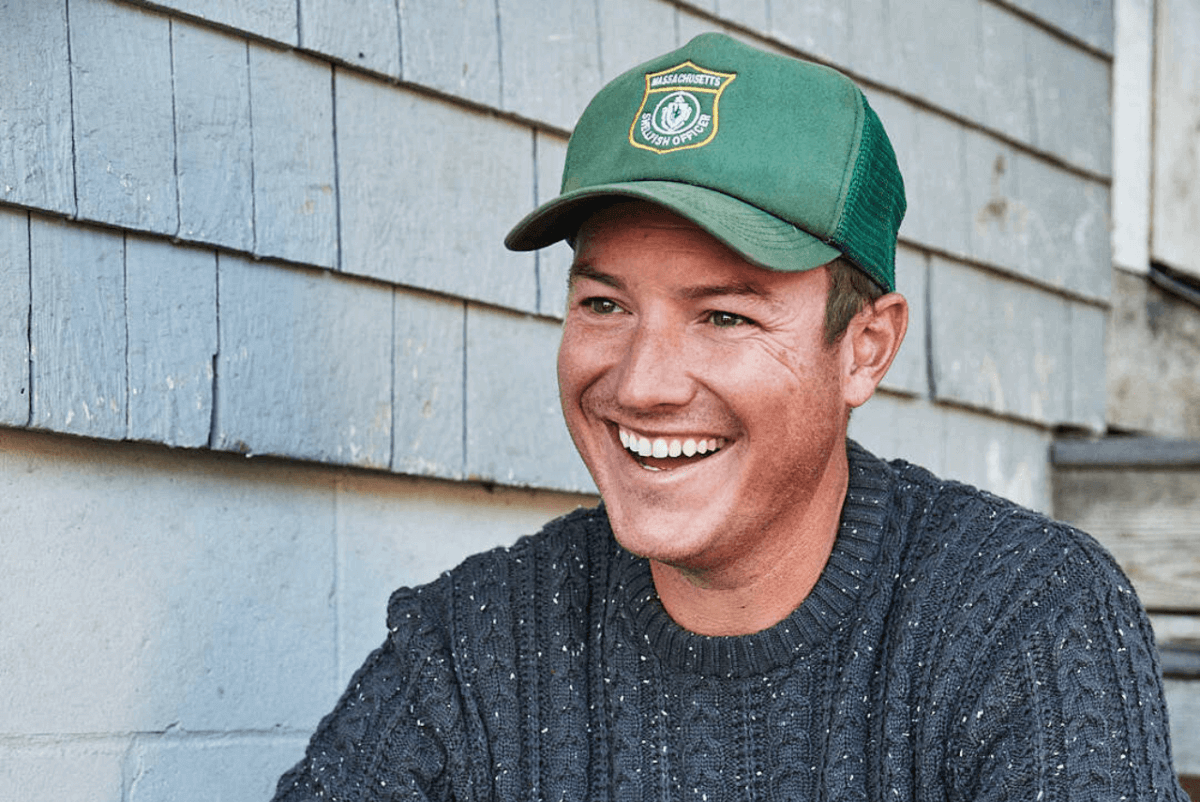
Chris Sherman. Photography by Nate Hoffman/Huckberry.
In the summer of 2010, the 135-year-old Stinson’s sardine cannery in Prospect Harbor, Maine shuttered. “It was probably for good reason,” says Chris Sherman, CEO of Island Creek Oysters, an aquaculture business based in Duxbury, Massachusetts. The plant was no longer economically viable due to federal restrictions on herring catch. Stinson’s was one of the last remaining seafood canneries in Maine—and the last sardine cannery in the United States—marking the end of the country’s 120-year-long sardine canning tradition. While reducing herring quota is intended to prevent overfishing, in coastal villages such as Prospect Harbor, such measures can have a devastating effect on the local economy: Canneries like Stinson’s not only provide jobs but also serve as a critical link that ensures steady, year-round business for fishermen.
Sherman is no stranger himself to the environmental and economic challenges of running an aquaculture business. Island Creek is a vertically integrated oyster operation, meaning it both farms and distributes its own oysters. But he’s still intent on turning the tides of the canning industry. In July, Sherman announced the launch of his latest venture, the Island Creek Cannery, the first ever single-origin canning facility of its kind in the US.
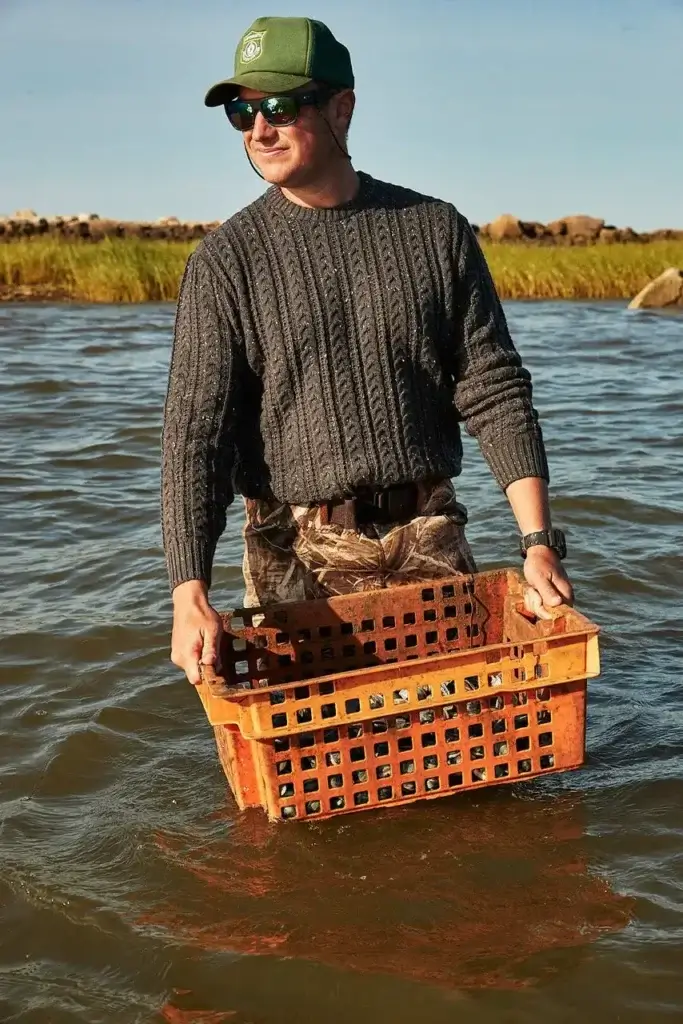
Long before the pandemic sent American appetites seaward, stoking our interest in convenient, high-end canned fish, Island Creek—a primarily fresh seafood business—had its eye on the tin. “We’ve always been interested in democratizing oysters and shellfish in general,” says Sherman. In 2016, Island Creek opened The Portland Oyster Shop—the company’s first full-service restaurant—in downtown Portland, Maine. But the raw bar-only concept was running lean, and Sherman quickly realized he needed another food option to bulk out the menu that wouldn’t require a setup to make hot food. Taking cues from already-established tin-centric restaurants such as NYC’s Maiden Lane and Boston’s haley.henry, Sherman opted for serving conservas, a culinary delicacy popular across the Mediterranean, whereby seafood is preserved in brines, olive oils, and other flavorful sauces. Conservas store indefinitely and require little back-of-house labor, an operational boon. But would the market find them satisfying? “I was convinced at that point that it was just not going to work, but people really responded to [the conservas],” says Sherman. “That gave us a pretty good indicator that this thing has some legs.”
READ MORE
Tinned fish is trending. Can you trust the label?
To meet the newfound customer demand for tinned fish, Island Creek began importing, distributing, and co-branding its own line of conservas for Conservas Mariscadora, a collective of independent female shellfish harvesters—or mariscadoras—in Galicia, Spain who harvest fully traceable seafood from the waters of the Cantabrian Sea. While relatively new to the US market, in Spain, conservas are ubiquitous. “The Spanish eat a ton of seafood,” says Sherman, who began traveling the country researching sustainable fish farms on an Eisenhower Fellowship in 2018. “When we eat french fries, they’re eating shellfish.” Thus, canning became a necessary innovation, entrenching itself into Spanish culture. Sherman noticed this most starkly while shopping at El Corte Inglés, where tin after tin of conservas stocked four full aisles’ worth of grocery store shelves. “The octopus section was bigger than the soup section at most American grocery stores,” says Sherman.
That’s when things began to gel for Sherman. For Island Creek, a company familiar with the challenges of manufacturing a seasonal product, packing seafood in tins presented a shiny solution. By canning stateside, they could pack their seasonal product at peak quality while creating inventory that could be sold year-round at a good value. Additionally, the growing popularity of conservas in the US meant the demand for high-quality fish aligned with the company’s own standards.
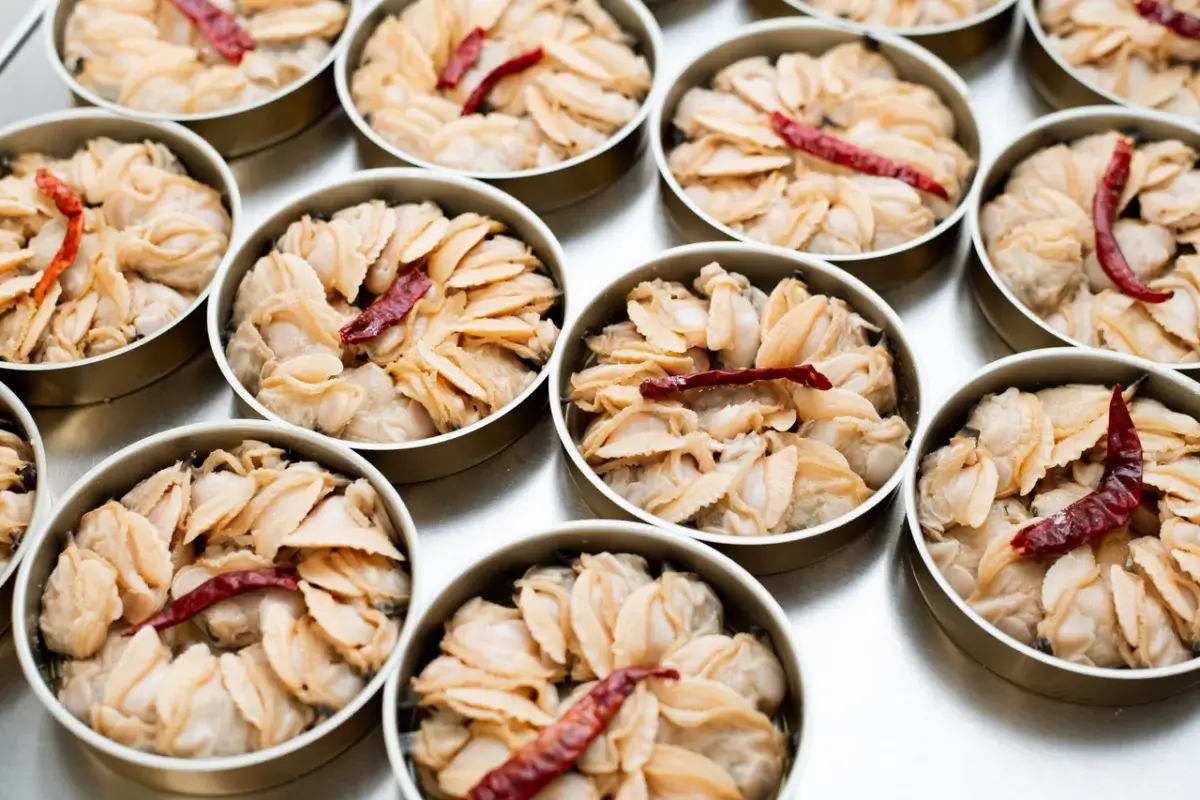
Located in the historic fishing community of New Bedford, Massachusetts, the Island Creek Oyster Cannery is a small operation with big ambitions. Blending Island Creek Oysters’ already established brand of sustainable aquaculture with the American market’s newfound hunger for high-quality, shelf-stable seafood, Island Creek is resurrecting a dormant US tradition that’s existed since the 1800s—albeit repurposing it with Mediterranean ideals to meet the needs of the contemporary market.
While Island Creek has built an entire business out of fresh oysters, it hasn’t yet canned any. “Oyster supply has been pretty tight,” says Sherman, which drives the prices up. “They’re also the most difficult shellfish to can well.” Instead, the company is focused on farming clams, as well as sourcing from other New England seafood producers it’s met and vetted, such as Cherrystone Aqua-Farms in Virginia. “We’re definitely branching out, but we’re trying to keep everything single-origin, single-producer, and we’re trying to keep everything working with responsible harvesters and farmers that meet our standards,” says Sherman. The term “single-origin” is used broadly across the specialty food and beverage space (think chocolate, coffee, and whiskey) and refers to foods from a specific farm, location, or source. The same is true in aquaculture. It’s a strong marker of fish and seafood traceability—and thus, quality.
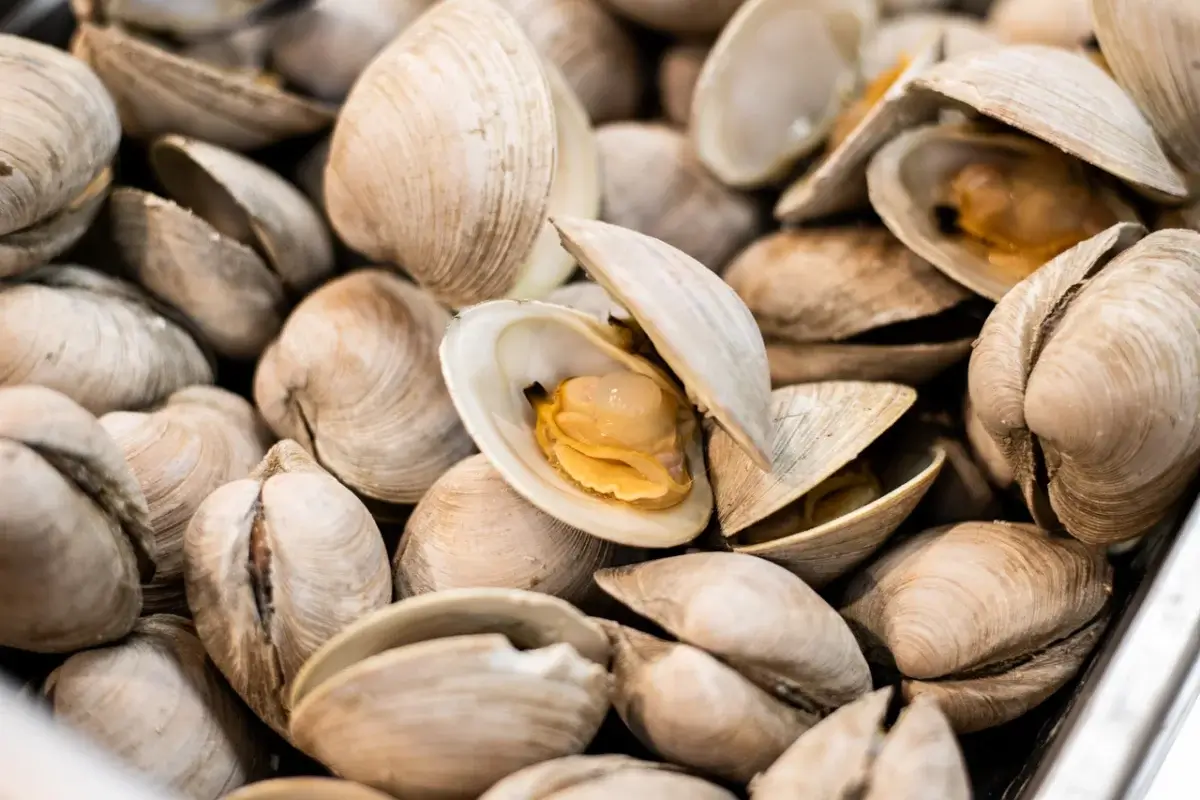
Having a cannery in the US that sources seafood exclusively from American shores presents a significant opportunity for American seafood producers. Island Creek is confident that this venture will support coastal communities across the United States by providing a stable, year-round supply of seafood. This steady inventory will benefit the numerous seafood-related businesses that are a major part of the East Coast’s fishing economy.
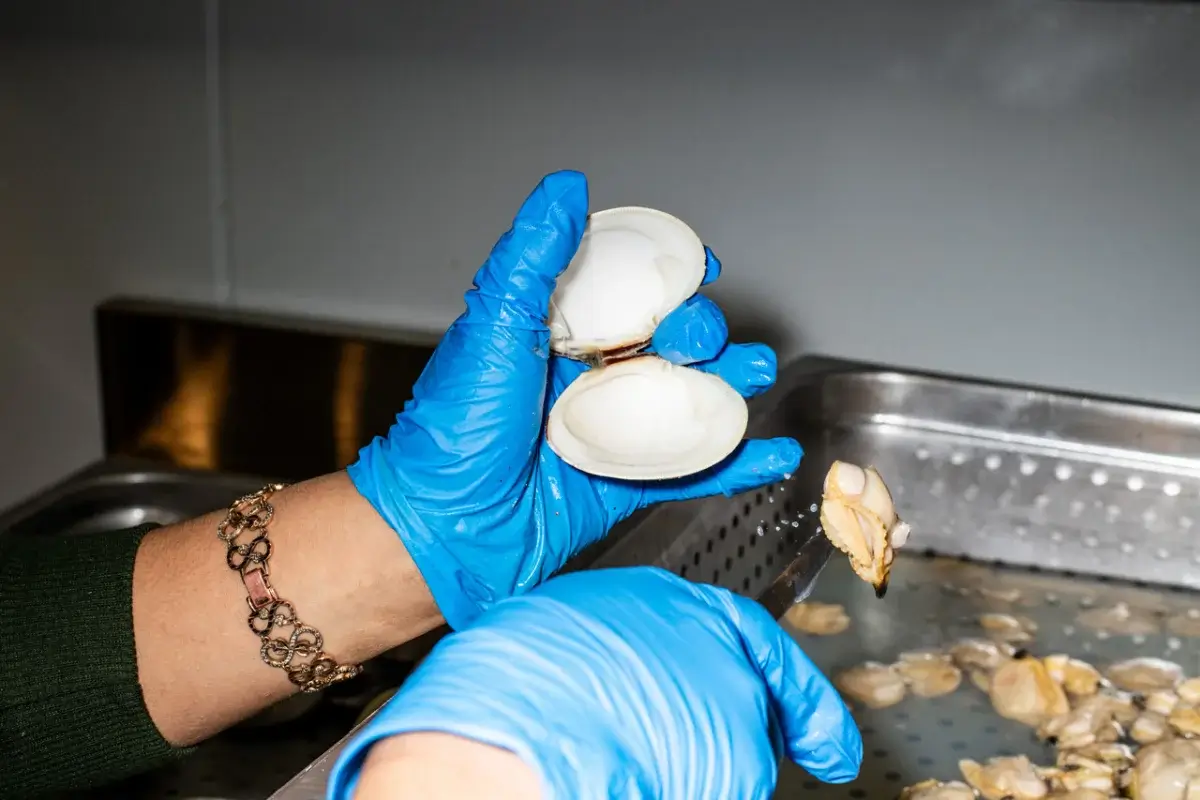
“Since we’ve publicized the cannery, I’ve had half the medium- to small-scale seafood producers in the Northeast reach out to me about handling their product,” says Sherman. “We just now need to connect the dots and make the demand there as well. I think we’re doing that, but it’s brick by brick.” To boost the lowbrow reputation of canned fish that still dominates much of the US market, Island Creek is choosing to can in European format tins—generally wider and shallower than a typical tuna or cat food tin—which he hopes will telegraph the quality of the product and justify the premium price point.
With little in the way of tradition in the United States, the tinned fish market is still finding its sea legs; Sherman notes there is “some chaos in the market” with tinned fish prices ranging anywhere from $4 to $30, but the company is making strides towards its goal of democratizing shellfish. “I didn’t think we would sell to 800 chefs around the country every week…but honestly, we sell a ton of tin fish to chefs and restaurants that aren’t tinned fish restaurants. They’re using them as an ingredient in a pasta dish, or on rice. And they’re using it because they don’t have the labor and the shucking and the steaming and the sauce making,” says Sherman. He is confident that other canneries like his will follow suit, especially along the East Coast where fish stocks and shellfish farms are abundant.
READ MORE
Meet the lobster women making waves in Maine.
However, Sherman is candid about the challenges that lie ahead: In countries such as Spain and Portugal, where most canneries are run by generations of families, labor costs are a fraction of those in the United States. Nevertheless, canning has long been, and continues to be, a revolutionary process with a significant impact on ensuring sustainable aquaculture practices and preserving local fishing communities that rely on canning during the off-season. It also benefits consumers, who can enjoy high-quality seafood at a more reasonable price point than fresh seafood. Says Sherman, “We’re blazing the trail—for better or worse.”
Follow us
This work is licensed under a Creative Commons Attribution-NoDerivatives 4.0 International License.
Want to republish a Modern Farmer story?
We are happy for Modern Farmer stories to be shared, and encourage you to republish our articles for your audience. When doing so, we ask that you follow these guidelines:
Please credit us and our writers
For the author byline, please use “Author Name, Modern Farmer.” At the top of our stories, if on the web, please include this text and link: “This story was originally published by Modern Farmer.”
Please make sure to include a link back to either our home page or the article URL.
At the bottom of the story, please include the following text:
“Modern Farmer is a nonprofit initiative dedicated to raising awareness and catalyzing action at the intersection of food, agriculture, and society. Read more at <link>Modern Farmer</link>.”
Use our widget
We’d like to be able to track our stories, so we ask that if you republish our content, you do so using our widget (located on the left hand side of the article). The HTML code has a built-in tracker that tells us the data and domain where the story was published, as well as view counts.
Check the image requirements
It’s your responsibility to confirm you're licensed to republish images in our articles. Some images, such as those from commercial providers, don't allow their images to be republished without permission or payment. Copyright terms are generally listed in the image caption and attribution. You are welcome to omit our images or substitute with your own. Charts and interactive graphics follow the same rules.
Don’t change too much. Or, ask us first.
Articles must be republished in their entirety. It’s okay to change references to time (“today” to “yesterday”) or location (“Iowa City, IA” to “here”). But please keep everything else the same.
If you feel strongly that a more material edit needs to be made, get in touch with us at [email protected]. We’re happy to discuss it with the original author, but we must have prior approval for changes before publication.
Special cases
Extracts. You may run the first few lines or paragraphs of the article and then say: “Read the full article at Modern Farmer” with a link back to the original article.
Quotes. You may quote authors provided you include a link back to the article URL.
Translations. These require writer approval. To inquire about translation of a Modern Farmer article, contact us at [email protected]
Signed consent / copyright release forms. These are not required, provided you are following these guidelines.
Print. Articles can be republished in print under these same rules, with the exception that you do not need to include the links.
Tag us
When sharing the story on social media, please tag us using the following: - Twitter (@ModFarm) - Facebook (@ModernFarmerMedia) - Instagram (@modfarm)
Use our content respectfully
Modern Farmer is a nonprofit and as such we share our content for free and in good faith in order to reach new audiences. Respectfully,
No selling ads against our stories. It’s okay to put our stories on pages with ads.
Don’t republish our material wholesale, or automatically; you need to select stories to be republished individually.
You have no rights to sell, license, syndicate, or otherwise represent yourself as the authorized owner of our material to any third parties. This means that you cannot actively publish or submit our work for syndication to third party platforms or apps like Apple News or Google News. We understand that publishers cannot fully control when certain third parties automatically summarize or crawl content from publishers’ own sites.
Keep in touch
We want to hear from you if you love Modern Farmer content, have a collaboration idea, or anything else to share. As a nonprofit outlet, we work in service of our community and are always open to comments, feedback, and ideas. Contact us at [email protected].by Sarah Angileri, Modern Farmer
August 22, 2024
Modern Farmer Weekly
Solutions Hub
Innovations, ideas and inspiration. Actionable solutions for a resilient food system.
ExploreShare With Us
We want to hear from Modern Farmer readers who have thoughtful commentary, actionable solutions, or helpful ideas to share.
SubmitNecessary cookies are absolutely essential for the website to function properly. This category only includes cookies that ensures basic functionalities and security features of the website. These cookies do not store any personal information.
Any cookies that may not be particularly necessary for the website to function and are used specifically to collect user personal data via analytics, ads, other embedded contents are termed as non-necessary cookies.
“the first ever single-origin canning facility of its kind in the US”
Ekone & Wildfish over on the west cost might take issue with this statement!
Thanks for the article Shared up on Sustainable Aquaculture Stirling Network FB site – Interesting history of attempts to can various aquaculture products over the years – including in SS Africa with tilapia and catfish – All the best Will
“Instead, the company is focused on farming clams, as well as sourcing from other New England seafood producers it’s met and vetted, such as Cherrystone Aqua-Farms in Virginia.” Virginia is south of the Mason-Dixon line – – not quite “New England”…